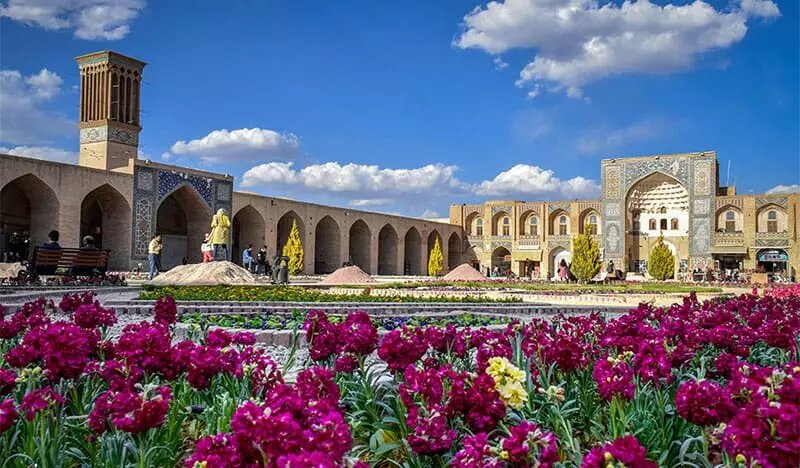Exhibit explores treasured Ganjali Khan complex over time

TEHRAN – On Monday, a photo exhibition featuring old and fresh pictures of the 17th-century Ganjali Khan complex opened to the public in Harandi Garden Museum in Kerman province, southern Iran.
The splendid complex encompasses a madrasa, a mosque, a UNESCO-designated caravanserai, a hammam (public bathhouse), a water reservoir, and a labyrinth bazaar, all centered on a large public square. Experts say is a typical Iranian tourist spot to wander around!
The exhibition, held in collaboration with the private sector, will be running through December 14, aimed to promote the significance of preserving Kerman’s cultural heritage, the provincial tourism chief said on the sidelines of the inauguration of this exhibition among journalists.
“Kerman's cultural heritage is very rich. And preserving and conserving its treasures holds significant value for us,” Saeid Shahrokhi added.
“We believe that to preserve cultural heritage, there should be a campaign, and all the people of the province should participate in this campaign.”
Referring to the exhibition, he stated the event is aimed to raise public awareness of Kerman’s rich cultural heritage and the need to preserve it for coming generations.
Shahrokhi continued, “People can observe how the conservation and restoration of a cultural heritage site have evolved by attending this exhibition.”
Covering an area of 11,000 square meters, the compound was built upon the order of Ganjali Khan who governed Kerman and some neighboring areas during the late 16th to early 17th centuries under Safavid Shah Abbas I (r. 1571-1629).
With an entrance at the northeastern corner of the square, the mosque, though it is small in size, enjoys elaborate tilework and arabesque designs. It boasts a gilt-pattern inner dome and honeycomb windows.
The hammam has been repurposed into an anthropology-like museum in which wax dummies illustrate the workings of a traditional bathhouse. There is also a display case for antique washing utensils. The waxworks clearly illustrate the activities which took place in the old hammam, including a rather chubby chap being cleaned!
The bazaar is ornamented with exquisite plasterwork and wall paintings that are well-preserved, although they are roughly 400 years old.
The UNESCO-listed caravanserai is based on the four-iwan typology, with guest rooms constructed around a courtyard. Shah Abbas I (1571-1629) is credited with building a network of caravanserais across Iran during the much later Safavid dynasty.
The big and sprawling Kerman province has been a cultural melting pot since antiquity, blending Persians with subcontinental tribal inhabitants. It is home to myriad historical sites and scenic landscapes, such as Bazaar-e Sartasari, Jabalieh Dome, Ganjali Khan Bathhouse, Malek Jameh Mosque and Shahdad Desert to name a few.
AFM
Leave a Comment